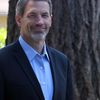Innovations in medical education are improving the affect and effect of doctors in training. Med schools are exploring uses of big data to improve diagnosis and trend spotting while others are incorporating interdisciplinary studies to improve observation and communication skills.
Big Data
Behind every patient and possible treatment regime is a mountain of data. Figuring out how to access and interpret all that data is not a skill that mostphysicians learned in medical school -- but,
, that'schanging. First and second year students at the
participate in
.
Students are given access to a database with more than five million anonymous records -- information on every hospital patient in the state for the preceding two years. Students use analytical tools to spot trends and to consider the quality of care provided to different subgroups and to even evaluate the performance of individual doctors.
The project, funded in part by an effort of the
to update what and how medical students are taught.
, an associate dean for educational informatics said the concept of having students learn to use health data is catching on quickly. "If you don't have these skills, you could really be at a disadvantage," says Triola, "in terms of the way you understand the quality and the efficiency of the care you're delivering."
of big data is crowdsourced diagnosis.
pairs "Medical Detectives" (retired physicians, medical students, other health professionals, and anyone with something to contribute) with patients with hard-to-diagnose conditions on a platform that incorporates a "patented prediction market system" that collects bets and develops a list of the most likely diagnoses and solutions.
Students learn to review the history, physical data, and lab data from cases that have been worked up by many different doctors over many years. This is similar to what medical students and residents do once they are treating real patients. The difference? They learn, in real time, from more experienced physicians also working the case on the same platform.
Art & Observation
Our biggest failure in health care is a lack of communication according to a
(my dad). Lack of communication produces more than 100,000 deaths per year and 100,000 injuries to hospitalized Medicare patients per month.
At
, med students study art to improve their observational and communication skills. The Foundations of Doctoring block includes a Humanities, Ethics and Professionalism thread developed by CU staff in partnership with the Denver Art Museum. The unit includes small group workshops including observation and discussion of one or two selected works of art; drawing and description of an image with students in pairs; discussion of techniques and debrief of session.
By closely studying works of art and discussing their observations, med students learn skills useful for both physical examination and communication in a clinical encounter.
There is growing
to teach diagnosis and treatment without putting patients at risk. Simulation offers scheduled, valuable learning experiences that are difficult to obtain in real life. Learners address hands-on and thinking skills, including knowledge-in-action, procedures, decision-making, and effective communication.
Innovations in medical education are preparing doctors to make better use of data and contribute in a team-based environment.
For more check out:
Disclosure: Tom Vander Ark is CEO of Getting Smart and a partner at Learn Capital, a venture capital firm that invests in educational technology.
